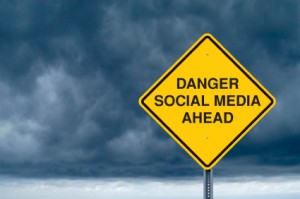The Most Innovative Companies of 2014

I can see clearly now.
For the ninth year in a row, Boston Consulting Group (BCG) has published its ranking of the 50 most innovative companies in the world. In 2012, the big news was that companies were recovering from the recession and starting to invest in innovation again.
Last year, the big news was that automotive companies were moving onto and up the list. Nine of the top 20 were automotive companies as were three of the top ten – Toyota, Ford, and BMW. Alas, the automotive innovation trend seems to have been short lived. The number of automakers on the list dropped from 14 in 2013 to nine in 2014. Of these nine, only two had moved up from the previous year: Tesla and Fiat. We learned from Rita Gunther McGrath that you can’t just turn on the innovation engine when you need it and turn it off when you don’t – but that seems to be exactly what the automakers are doing.
Software, computer, and social media companies continue to dominate the top end of the list. The top three remain Apple, Google, and Samsung though the order has changed slightly. Apple remains number one but Google has leapfrogged Samsung into the second slot.
What can we learn from this year’s list? First, the importance of culture. Second, an appreciation for three specific behaviors that promote innovation and coincide nicely with academic research on innovation.
Creating a culture of innovation requires consistency, discipline, investment, and leadership. As we learned last year, Samsung’s cultural mantra seems to be, “Change everything but your spouse and your children.” That’s a commitment that few companies are willing to make. As BCG points out, even the “breakthrough” companies that lead the innovation wave assess themselves as being little better than average.
Creating an innovation culture also requires some tolerance for failure. Not every good idea is going to pan out. Strong innovative cultures typically have the willpower to pull the plug quickly and learn from their mistakes. When failures happen, most companies will investigate the immediate problem. Innovative companies will also investigate the process that led to the problem.
Innovative cultures also tend to have a strong customer focus. They understand how customers behave and why. As BCG points out, they release “…products that customers will embrace rather than pushing new technologies simply because they are novel.”
On three points, breakthrough innovators differ significantly from strong (but not breakthrough) innovators:
- They cast a wide net for ideas – this corresponds nicely to the “W” in the Heath brothers WRAP process: widen your options. BCG investigated a dozen different sources for innovative idea. Breakthrough innovators lead other companies in using ten of the twelve.
- They use business model innovation more – when we speak of innovation, we’re often talking about products. The breakthrough companies also innovate the way they do business. It’s a new wine if old bottles concept; it’s hard to take something radically new and sell it the same old way. It appears that breakthrough companies are also more likely to use ambidextrous organization models.
- They have cultures geared to breakthrough success — as Rosabeth Moss Kanter points out, it’s hard to measure the impact of a radical innovation with old tools like ROI and NPV. Breakthrough innovators use different metrics, like proportion of sales derived from recent products. They also pay more attention to hiring the right people and less to move product through the pipeline.
So what can we learn? Innovation requires tenacity and consistent commitment. Professional athletes used to go fishing during the offseason. Now they work out relentlessly to stay in shape. So do innovative companies.
Which Companies Are The Most Innovative?

Change Is Coming
Last week, I wrote about which countries are the most innovative. (Hint: Switzerland and Sweden topped the list). This week, let’s discuss which companies are the most innovative.
Boston Consulting Group (BCG) just published their eighth annual compilation of the most innovative companies in the world. BCG collected data from 1,500 executives and rated and ranked the 50 companies that are deemed the most innovative.
Innovation continues to be a very high profile objective. Over three-fourths (77%) of the respondents noted that innovation was among the top three strategic imperatives for their respective companies. This is a steady upward trend since a low point of 64% in 2009, when companies presumably had other things on their mind. This trend seems to match a similar “return to innovation” trend at the national level.
So which companies are the most innovative? Apple continues to claim the top spot but Samsung has leapfrogged over Google to stake a strong number two position. Samsung has built an innovation culture around the slogan, “Change everything but your spouse and your children.” As BCG reports, building a culture that emphasizes and accepts change is one of the keys to success.
High tech companies take six of the top ten positions. In addition to Apple, Samsung, and Google in the top three slots, Microsoft is fourth, IBM is sixth, and Amazon is seventh.
The presence of top tech companies is not a big surprise. The bigger surprise for me was that three car companies vaulted into the top 10: Toyota is fifth, Ford is eighth, and BMW is ninth. Perhaps even more impressive is that car companies accounted for nine of the top 20 slots. GM is 13th, VW is 14th, and Hyundai, Honda, Audi, and Daimler take positions 17 through 20.
BCG suggests that three major factors are pushing the car companies towards greater innovation. First, “…manufacturers are racing to meet higher fuel-efficiency standards”. Second, many companies are investigating and experimenting with electric vehicles. Third, “…safety standards continue to rise”.
What causes companies to be innovative? Based on this year’s crop of leaders, BCG notes that there are five critical factors. I’ll write more about these in the future but here’s a first take:
- Top management is committed to – and fosters a culture of – innovation as a competitive advantage. Like Samsung, the leaders of the leading companies push hard for innovation.
- They leverage their intellectual property. They understand the rules of the IP game and they manage – sometimes buying, sometimes selling – complex portfolios of patents and other intellectual property.
- They manage a portfolio of innovative projects. They generally guide multiple projects simultaneously. Some are world changers; others are incremental enhancements. Management understands the project process and has a good sense of when to fish and when to cut bait.
- They have a strong customer focus. They continually ask the question, “What’s good for the customer?”
- They develop “strong processes, which lead to strong performance”. They often have standardized processes that require inter-disciplinary leaders to make conscious decisions about where to invest (and where not to).
Local, Personal, Social, and Always On
 The Boston Consulting Group (BCG) just published a new study that compares 16 industries in their ability to deliver digital satisfaction to American consumers. What’s the worst industry? The telco/cable industry is at the bottom of the heap. What’s the best industry? Surprise … it’s personal banking.
The Boston Consulting Group (BCG) just published a new study that compares 16 industries in their ability to deliver digital satisfaction to American consumers. What’s the worst industry? The telco/cable industry is at the bottom of the heap. What’s the best industry? Surprise … it’s personal banking.
BCG surveyed 3,135 consumers in March 2013 and measured satisfaction with 17 different digital “interactions”. These were grouped into four broad categories:
- Research – interactions include the ability to find information quickly and easily, the ability to find better prices, etc.
- Transactions – the ease of making the transaction, the ability to buy what I need, etc.
- Post-transaction activities – including social features, customized communication, and mobile access.
- Other – including quick access to help and the degree to which I trust this transaction.
The researchers asked consumers to rate each interaction in two ways: 1) how important is it?; 2) how satisfied are you with it? With these data, we can compare expectations and how well those expectations are met.
The researchers crunched all the data and compiled the 16 industries into four categories:
Leaders – consumers had high expectations of leaders and, by and large, their expectations were met. In general, the leaders scored well across all four interaction categories, from beginning to end. (Actually, the process never really ends). The four leading industries are (in order) personal banking, online merchants, media retail, and electronics retail. Personal banking leads by a wide margin, with a total satisfaction score of 15.2, compared to 11.8 for online merchants, the second ranking industry.
Aspirants – these industries do well on the research interactions but lag on the transaction and post-transaction categories. In other words, they get off to a good start but don’t follow through well. Consumers are not displeased with aspirant performance but think it could be improved. Industries in this category are: apparel retail, airlines, investments, and hotels.
Sleepers – consumers have low (digital) expectations of sleeper industries … and those expectations were fulfilled. Sleeper industries are: supermarkets, automobiles, and real estate.
Laggards – consumers have higher expectations of laggards (than of sleepers) but low satisfaction. Laggards fall behind in all interaction categories, from research to post-transaction. Laggards include: utilities, government services, health care providers, insurance, and (worst of the worst) telco and cable
Consumers want the digital experience to offer more than the physical experience. Digital might offer more options, more information, better prices, or more convenience. It might even be fun. Generally, consumers “expect the digital experience to be local (recognizing where they are), personal (tailored to their individual needs and preferences), social (shared with their friends) – and always on.”
The study also points to the growing importance of mobile access. Roughly half of Millennials (born 1980 – 2000) use mobile devices while shopping. For older consumers, the rate is approximately one-fifth. Mobile access enables two key trends:
Showrooming – check out the merchandise in a brick-and-mortar retail outlet, then compare prices and buy online.
Omnichannel – use the entire array of online, mobile, virtual, social, and real world channels to make a buying decision.
As the authors point out, the purchasing process is no longer linear; it’s now fluid and dynamic. To succeed, companies will need to enhance satisfaction through the entire range of interactions and do it through all channels. It’s a daunting challenge. The reward, however, is a slice of the $450 billion e-commerce market that BCG projects by 2016.